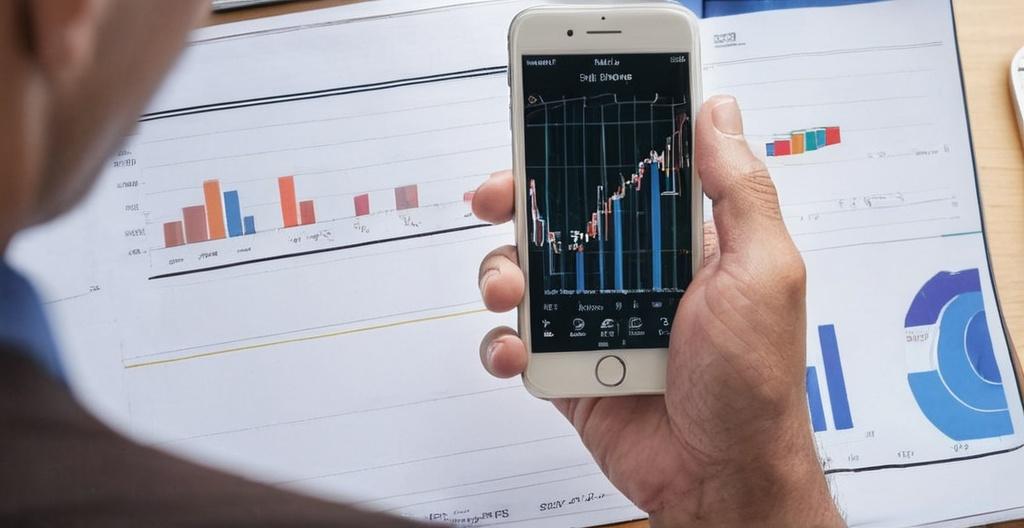Key Take Aways About Algorithmic Trading
- Algorithmic trading uses computer programs for swift, emotion-free stock trading.
- The goal is to execute large orders by breaking them into smaller trades for optimal pricing and timing.
- Algorithms are used for arbitrage, market making, and trend following.
- High-frequency trading (HFT) relies on millisecond-level speed.
- Regulatory scrutiny demands compliant and transparent algorithms.
- Technical analysis is essential, using indicators like moving averages and RSI.
- Effective risk management is crucial; testing in controlled environments prevents costly mistakes.
- Future trends include AI and machine learning integration in trading algorithms.

Algorithmic Trading Basics
Algorithmic trading is like having a diligent assistant who doesn’t sleep, eat, or spend time scrolling through social media. It’s all about using computer programs to trade stocks at speeds and frequencies that would make a human’s head spin. Programs execute trades using pre-set rules based on price, timing, or other variables. The aim? To take the emotion out of trading and make decisions based on cold, hard data.
The Nuts and Bolts of Algorithmic Trading
At its heart, algorithmic trading is about executing a large order by breaking it into smaller chunks to get the best possible price, or to complete the order on time. Traders use algorithms for purposes like arbitrage, market making, and trend following.
Though efficient, algorithmic trading isn’t foolproof. The 2010 Flash Crash is a vivid example of when things go awry. In just about 36 minutes, the U.S. stock indices plummeted before bouncing back, all thanks to algorithms working unexpectedly.
A Day in the Life of an Algorithm
Imagine your algorithm like a highly efficient day trader, sipping coffee and wearing the sharpest suit. It executes trades with precision, hardly ever blinking. The morning begins with a flurry of activity—scanning markets, analyzing patterns, and crunching numbers faster than the speed of light. When it spots a trade opportunity, it doesn’t hesitate. The algorithm makes a move before any human can react.
Speed and Efficiency
Algorithms thrive on speed. Markets move fast, and these digital traders need to be even faster. For example, high-frequency trading (HFT), a subset of algorithmic trading, relies on ultra-short-term strategies to capitalize on the slightest price discrepancies. We’re talking milliseconds or even microseconds here.
Regulatory Challenges
While algorithms have the reflexes of a cat, they face the regulatory hurdles every trader must jump. Regulating bodies are increasingly scrutinizing algorithmic trading to ensure fair play and to avoid market manipulation. Firms must ensure their algorithms are compliant and transparent, often requiring significant time and resources.
Technical Analysis and Algorithms
Algorithmic trading isn’t just about executing trades; it also relies heavily on technical analysis. By analyzing historical data, traders develop algorithms that anticipate future price movements. Imagine it like you’re trying to predict the weather but with slightly better odds, at least sometimes.
Most algorithmic strategies integrate technical indicators like moving averages, Bollinger Bands, and the Relative Strength Index (RSI). Traders often program these indicators into algorithms to automatically trigger trades when certain conditions are met.
Risk Management
No matter how fast or smart an algorithm is, the market remains unpredictable. Effective risk management strategies are crucial, as there’s always a chance of losing money. Stop-loss orders and risk assessments are standard practices in mitigating potential disasters.
Personal Touch: A Tale from the Trading Desk
I remember a tale from a friend working on a trading desk. His firm developed an algorithm they’d nicknamed “The Money Machine.” It worked brilliantly until one fine day when a minor coding glitch scrambled its trading logic. Instead of buying low and selling high, it was doing the opposite. Costly mistake. Lesson learned: Always, and I mean always, test those algos in a controlled environment before letting them loose in the wild.
Looking to the Future
Algorithmic trading is here to stay, and it’s reshaping how markets operate. As technology advances, algorithms will only grow more sophisticated, squeezing out every inefficiency they can find. The next frontier? Integrating artificial intelligence and machine learning into trading algorithms. This might sound a bit sci-fi, but it’s already happening, slowly but surely transforming trading into an even more data-driven and automated domain.
Whether you’re a seasoned trader or just someone with a passing interest, understanding how algorithms shape market activity provides a glimpse into the future of finance. And remember, no matter how advanced the technology gets, there will always be a place for human intuition and oversight. Because sometimes, nothing beats a gut feeling backed by solid data.